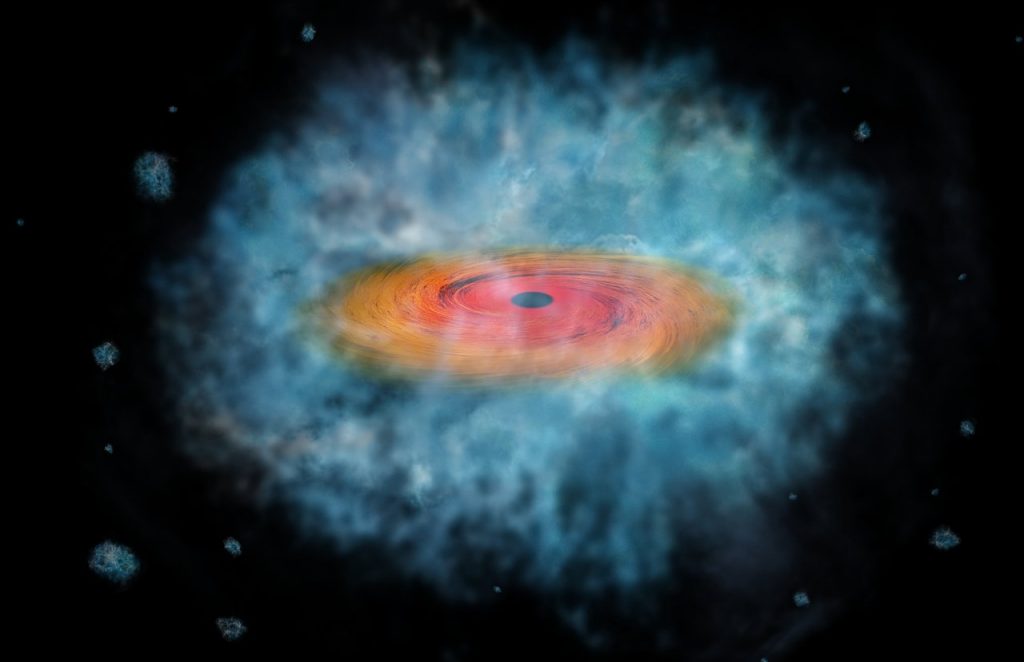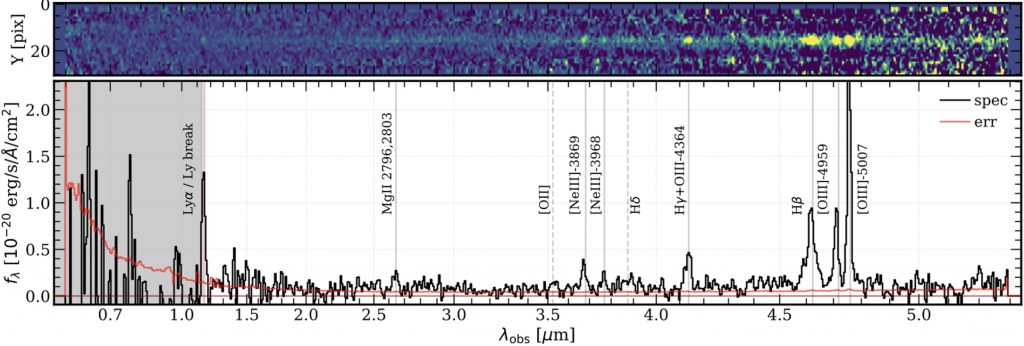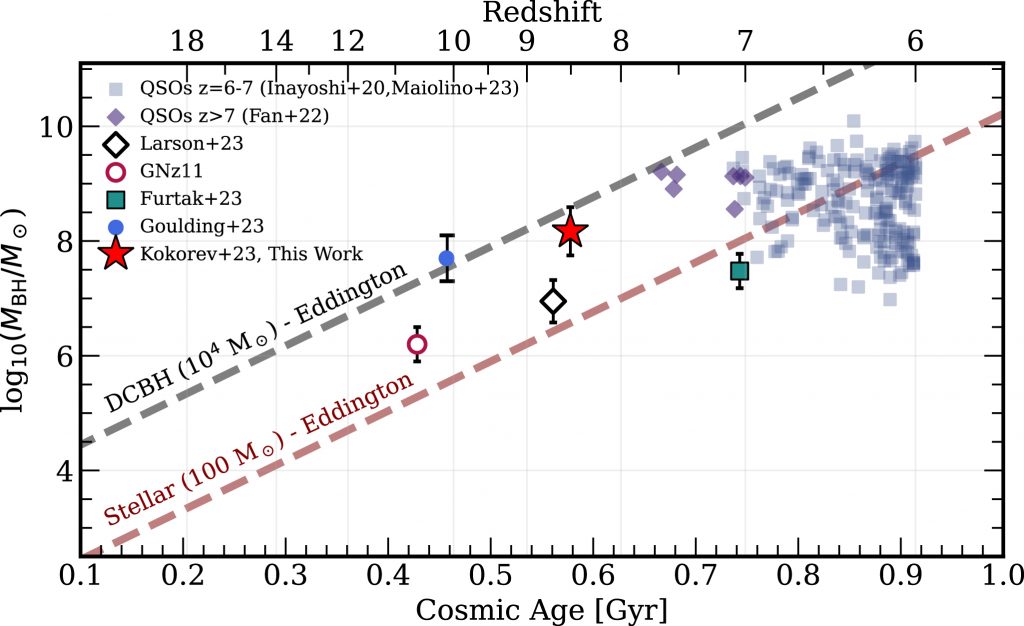The James Webb Space Telescope has discovered a group of pointy red objects in the early universe that may be active black holes covered in dust. Recent observations of one of these objects indicate that it is a black hole disproportionately large in its galaxy.
Inside most galaxies we find a supermassive black hole, and already in the first billion years of the universe’s history, there were galaxies harboring a black hole millions of times larger than the mass of the Sun. However, how these black holes gained such a large mass in such a short time is still an open question. Did the tiny black holes formed from dying stars capture enough gas to become supermassive within a few hundred million years, or did they start life as much larger black holes in the first place?
Both possibilities have limits: we don’t yet know how stellar-mass black holes could feed at such a rate to evolve into supermassive black holes, and we don’t even have direct evidence that supermassive black hole cores formed. To learn more about these giants, researchers had to collect observations of objects from the early universe.

Vasilij Kokorev (Kaptein Institute of Astronomy) and colleagues conducted follow-up studies on one of the red point sources found by the UNCOVER program of the James Webb Space Telescope. The spectrum of the UNCOVER ID 20466 source revealed that the celestial body had a redshift of z=8.5, meaning that it existed 600 million years after the Big Bang.

The reddish color and pointy nature of the source indicate that we are dealing with a galaxy that contains an active galactic nucleus — a massive black hole absorbing gas from its surroundings — and is enveloped in dusty gas. This is supported by the object’s spectrum, which consists of a mixture of broad and narrow emission lines. The broad emission lines come from high-density, high-velocity gas near the central black hole, while the narrow lines come from less dense gas farther from the center. This is the most distant active galactic nucleus in whose spectrum researchers have clearly recorded broad emission lines.
The mass of the black hole at the center of the distant galaxy is more than 100 million solar masses, which means that the black hole represents at least 30% of the galaxy’s mass. This ratio is much larger than what we see for supermassive black holes in the local universe or for intermediate black holes in the early universe. How could this black hole grow to such a size in such a short time, and why is it so large compared to its galaxy?

According to the researchers, the core of the black hole was created when an ancient gas cloud formed 104 It collapsed into a solar-mass black hole. In this scenario, the black hole could reach the observed mass within the specified time without exceeding the Eddington limit, the theoretical maximum on the accretion rate. In this way, black holes that are large compared to their galaxy can also be created.
It is also possible that the black hole’s core could be smaller, with a mass of about 100 solar masses, if it was capable of Eddington superaccretion over hundreds of millions of years. The exact path of the process remains a mystery, especially if it would occur without increasing the galaxy’s stellar mass with the mass of the black hole. As the James Webb Space Telescope reveals details of the high-redshift universe, we will learn more about how black hole seeds form and germinate.
source: AAS Nova
comment












































